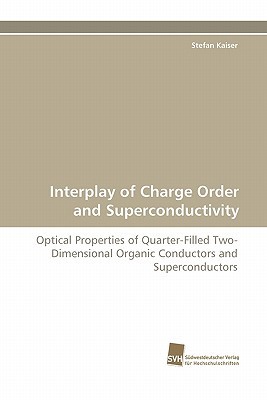
- We will send in 10–14 business days.
- Author: Stefan Kayser
- Publisher: Sudwestdeutscher Verlag Fur Hochschulschriften AG
- Year: 2011
- Pages: 268
- ISBN-10: 3838123913
- ISBN-13: 9783838123912
- Format: 15.2 x 22.9 x 1.6 cm, softcover
- Language: English
- SAVE -10% with code: EXTRA
Reviews
Description
In this thesis the optical properties of quasi two-dimensional organic molecular crystals are investigated. Within this class of materials some systems are metallic, some are insulating due to charge-order, and others even become superconducting. The driving force behind the ground states is the different degree of effective electronic correlations. Recent experimental and theoretical studies of strongly correlated materials suggest that fluctuations of the ordered state may mediate superconductivity. The intention of this work is to prove the presence of such charge fluctuations and reveal their relation to superconductivity. To do this, we investigated BEDT-TTF based organic conductors by optical spectroscopy covering a broad frequency (8-20000 cm-1 ) and temperature (1.8-300 K) range using FTIR- and THz-spectrometers. In addition, the transport properties are investigated by dc four-point contact measurements and microwave cavity perturbation technique.
EXTRA 10 % discount with code: EXTRA
The promotion ends in 20d.08:13:47
The discount code is valid when purchasing from 10 €. Discounts do not stack.
- Author: Stefan Kayser
- Publisher: Sudwestdeutscher Verlag Fur Hochschulschriften AG
- Year: 2011
- Pages: 268
- ISBN-10: 3838123913
- ISBN-13: 9783838123912
- Format: 15.2 x 22.9 x 1.6 cm, softcover
- Language: English English
In this thesis the optical properties of quasi two-dimensional organic molecular crystals are investigated. Within this class of materials some systems are metallic, some are insulating due to charge-order, and others even become superconducting. The driving force behind the ground states is the different degree of effective electronic correlations. Recent experimental and theoretical studies of strongly correlated materials suggest that fluctuations of the ordered state may mediate superconductivity. The intention of this work is to prove the presence of such charge fluctuations and reveal their relation to superconductivity. To do this, we investigated BEDT-TTF based organic conductors by optical spectroscopy covering a broad frequency (8-20000 cm-1 ) and temperature (1.8-300 K) range using FTIR- and THz-spectrometers. In addition, the transport properties are investigated by dc four-point contact measurements and microwave cavity perturbation technique.


Reviews